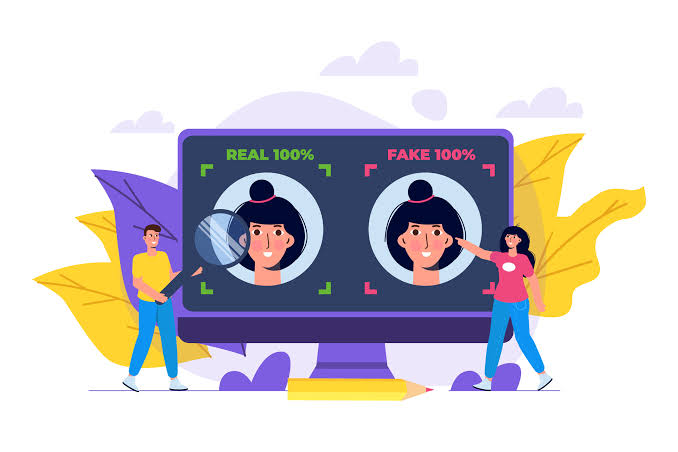Recently a deepfake video of Actress Rashmika Mandanna was found circulated widely on various social media platforms. Delhi Police already registered a FIR against it . If you are a lawyer or law student or a common people who spent time on social media then this post is important for you.
What is Deepfake Video?
Deepfake videos are a type of manipulated or synthetic video content created using deep learning and artificial intelligence techniques. These videos involve superimposing or replacing the faces of individuals in existing video footage with the faces of other people, often with the goal of making it appear as though the manipulated video is real. Deepfake technology can also be used to alter or manipulate the audio content in videos.
The term “deepfake” comes from the combination of “deep learning” (a subset of machine learning) and “fake.” Deepfake videos have raised concerns due to their potential for misuse, including the spread of misinformation, defamation, and the creation of realistic but fabricated content that can be difficult to distinguish from genuine videos.
Deepfake technology has both creative and malicious applications, and efforts are ongoing to develop methods to detect and combat the spread of deceptive deepfake content.
Deepfake Videos and Cyber Crime :
Deepfake videos are a concerning tool in the realm of cybercrime. They involve the use of artificial intelligence to manipulate or create videos that appear to show individuals saying or doing things they never did. This technology can be exploited for various malicious purposes, including:
Disinformation: Perpetrators can use deepfakes to spread false information, manipulate public opinion, or damage the reputation of individuals or organizations.
Phishing: Cybercriminals can use deepfakes to impersonate trusted individuals, such as company executives or family members, in video calls to deceive people into revealing sensitive information or transferring money.
Blackmail: Criminals may use deepfake videos to create fake compromising content and then extort money from victims by threatening to release the fabricated material.
Identity Theft: Deepfakes can be used to impersonate someone for fraudulent activities or to gain unauthorized access to systems, as facial recognition systems can be deceived.
Political Manipulation: Deepfakes can be used to manipulate political discourse, create fake speeches, or alter the statements of public figures.
Deepfake Videos and the Indian Law :
Deepfake videos can be a form of cybercrime, and their creation and distribution may be subject to legal consequences under the Indian Penal Code (IPC) and the Information Technology (IT) Act of 2000. The specific sections of these laws that may apply to deepfake-related offenses can vary depending on the circumstances, but some relevant sections include:
IPC Sections which are realted to these offences:
Section 415: Punishment for Cheating
Section 463: Forgery
Section 464: Making a false Document Section
468. Forgery for purpose of cheating
Section 469. Forgery for purpose of harming reputation
Section 470. Forged document or electronic Record
IT Act 2000 Sections:
66A. Punishment for sending offensive messages through communication service.
Section 66C. Punishment for identity Theft
Section 66D: Punishment for cheating by personation by using a computer Resource
Section 66E: Punishment for violation of privacy, which can apply when deepfake videos involve the violation of an individual’s Privacy
The punishment for these offenses can include imprisonment, fines, or both, depending on the severity and impact of the crime.
What to do if you find Deepfake Video Content?
If you discover a deepfake video of yourself, it’s important to take action to protect your privacy and reputation. Here are some steps you can consider:
Document the video: Take screenshots or make copies of the deepfake video as evidence.
Don’t share it: Avoid sharing the video, as doing so can potentially spread it further.Report to platform: If the video is on a social media platform or website, report it to the platform for removal. Most platforms have policies against deepfake content.
Consult legal advice: Speak to a lawyer who specializes in cybercrimes and digital privacy to understand your legal options.
Contact law enforcement: If the deepfake video is being used for malicious purposes, consider filing a report with law enforcement/ cyber PS.
Strengthen online security: Update your passwords, enable two-factor authentication, and be cautious about sharing personal information online.
Monitor online presence: Keep an eye on your online presence and reputation to address any further incidents promptly.
Educate yourself: Learn about deepfake detection tools and techniques to help identify and report such content.
Remember that dealing with deepfake videos can be a complex and challenging process. Seek professional advice and support to navigate the situation effectively. To combat the potential misuse of deepfake technology, it’s essential for governments, tech companies, and individuals to develop and employ methods for detecting and verifying the authenticity of video content. Additionally, raising awareness about the existence and potential dangers of deepfakes is crucial in the fight against cybercrime.
N.B : This Post is information & public awareness purposes only.

